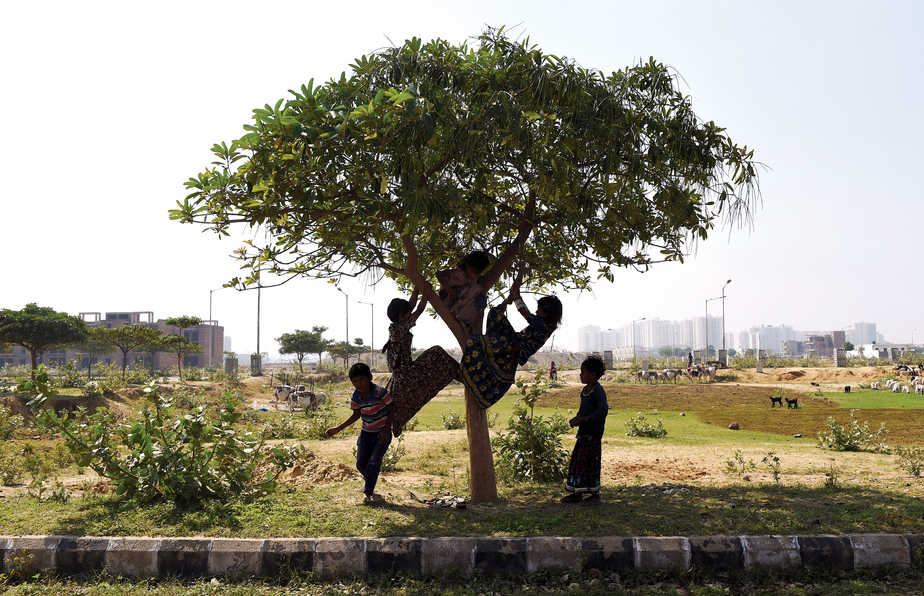Lutyens’ Delhi, considered the capital’s lungs, is slowly losing its green cover owing to different projects that are coming up in the area
In 1913, when the British decided to move its capital from Kolkata to Delhi, the charge of redesigning the city was given to prominent British architect, Edward Lutyens. While designing most of Central and South Delhi that house many important buildings of India, including the Parliament House, Rashtrapati Bhawan and India Gate, (now known as the Lutyens’ zone) he estimated that the greenery he cultivated around the area — 10,000 trees and over 100 km of green land — will last for 300 years. But it has been only 105 years and the greenery in this area is already under threat.
The National Green Tribunal (NGT) recently passed a judgement that gave the go-ahead to the reconstruction of Pragati Maidan, setting aside the allegations made by different environmental activists that the project hadn’t received a proper environmental clearance. “The court found no such discrepancies that the opposing parties claimed against the Indian Trade Promotion Organisation, which is why the project was approved,” says an NGT lawyer , who wishes to remain anonymous.
One of the many allegations that have been levelled against the project is that around 1,700 trees are being cut to make may for the project. This includes around 1,000 trees in the neighbouring Delhi zoo area which attracts migratory birds every year “The EIA (Environmental Impact Assessment) report categorically stated that the impact would be high, but no study as to what these high impacts would be, has been made part of the EIA report, which runs into more than 600 pages,” reads the statement by environmental rights NGO, Life, which is one of the many NGO’s that were fighting the case in the Supreme Court.
“Delhi is anyway one of the most polluted cities in the world,” says Verhaen Khanna, an environmental activist who was the major complainant against the ITPO, adding, “This area is what we can call Delhi’s green lung. So, if trees will be felled in this area, we will lose the little greenery we have, and as a result, pollution will increase in the city.”
In NGT’s judgement, it is mentioned that they have cleared the project, as they “have obtained permission from the Deputy Conservator of Forest (South) for felling 1,713 trees on the condition to grow 17,130 trees on the Yamuna flood Plains and the project site. Apart from this, 250 trees are being planted within the project site”. However, in a previous report by Patriot, it was seen that most of the trees planted by the Delhi government on the Yamuna floodplains of Garhi Mandu village, dried up or died due to lack of maintenance.
When contacted, officials from the ITPO said that they have done this in accordance to the Delhi Preservation of Trees Act. The Act also states that “Every person, who is granted permission under this Act to fell or dispose of any tree, shall be bound to plant such number and kind of trees in the area from which the tree is felled or disposed of by him.” But the ITPO are planning to replant the trees on the Yamuna floodplains, which is 17 km away . At the main site, only 250 trees are to be planted as per the plan, which is almost 1,500 less than the number of trees that are being felled. Despite several attempts, the Deputy Conservator of Forest (South) could not be contacted.
Another major site in the Lutyens’ zone that has been under renovation, is the area around India Gate. The Princess Park, a 14-acre area that was filled with numerous trees and six full-fledged parks, was sanctioned by the Indian government in 2015 for building a National War Memorial, in the memory of the martyrs of the Indian Army. “But to honour war heroes, the government took over a lush green area, sacrificing Mother Nature by building a structure instead,” says Verhaen Khanna.
On visiting the site, Patriot found that huge walls made of asbestos surround the area that was once the lush green Princess Park. “Earlier, I used to come to India Gate with my family and visit the nearby park to sit under the trees, as it felt so peaceful. Now, because of this construction, it is completely inaccessible,” says Ramesh Kumar, a citizen.
According to environmentalist Vikrant Tongad, the asbestos walls surrounding the area may prove harmful for the plants inside. The temperature inside the area is always high as asbestos is a material which gets heated quickly and the heat can obstruct the plants’ growth, leaving them stunted and malnourished.
A peek between the asbestos walls, and one can see the area covered with construction rubble, which again may prove harmful for the plants, as well as the soil in which the plants grow. “The constant digging erodes the soil and the dust from the rubble can kill the plants,” says Tongad. But there have been no complains to the NGT regarding the felling of trees or any other environmental violations in the area.
“We have filed a lot of RTIs. But even after so many months, we still haven’t received any replies,” says Tongad.
“Those six parks around India Gate were some of the most peaceful places in the whole city. But this war memorial is going to snatch that peace and turn it into a money-making tourist attraction,” says Khanna.
“It is clear with so many destructive projects that the authorities are least concerned about the health of the people and about environmental conservation. Destroying greenery and replacing it with cemented structures will not only destroy the beauty of the area, but will also cause irreparable harm to the environment, endangering human life in the process,” concludes Khanna.





